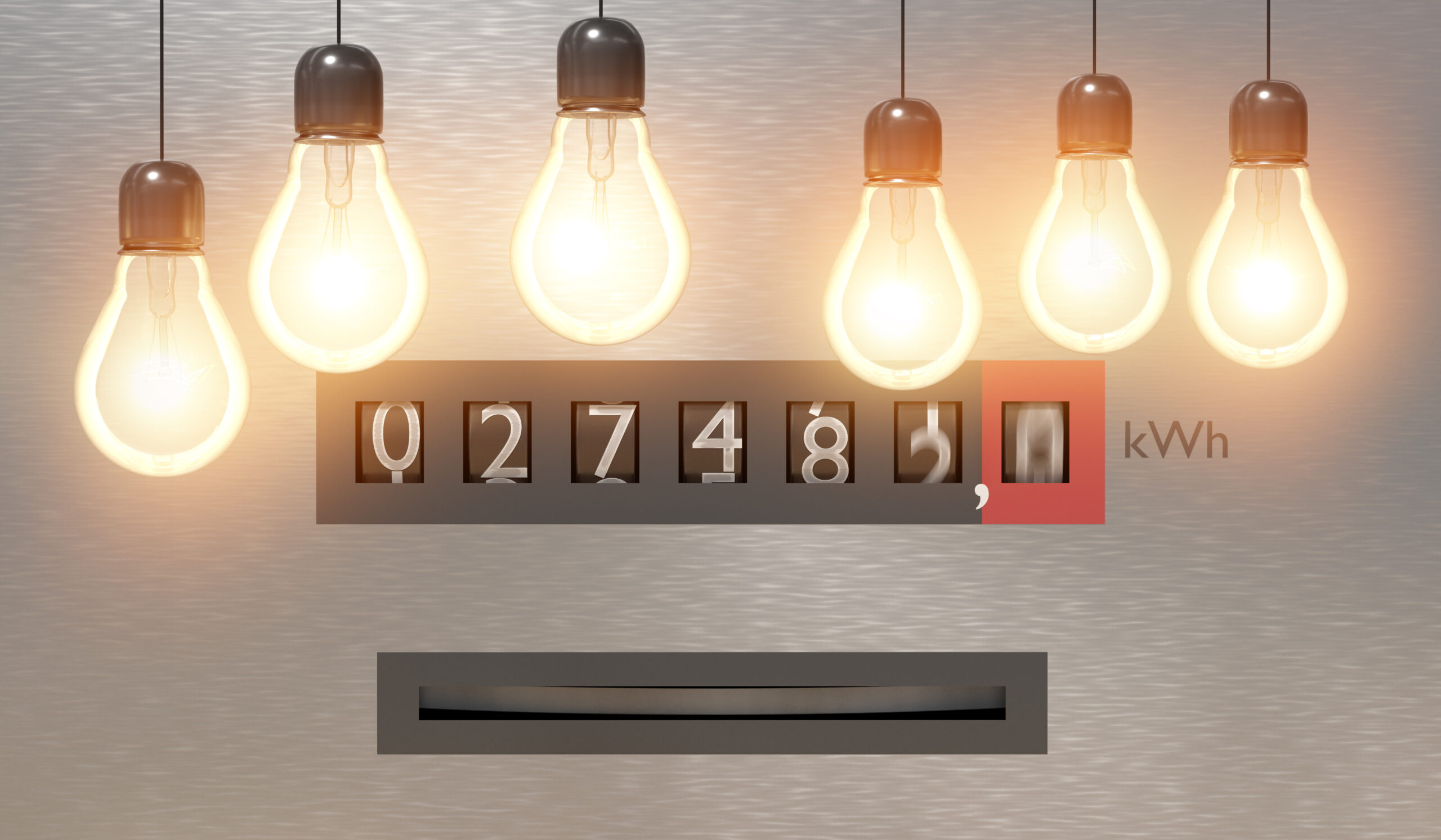The cash rate in Australia has reached 3.85%, up from a low of just 0.1% in 2022, following 11 consecutive cash rate hikes from the Reserve Bank of Australia (RBA). This has led to inflation of 6.8%, as the cost of everything, for both businesses and individuals alike, continues to increase.
In this article we’ll look at the key impacts of the rise in the cost of living in Australia in 2023, and in particular at the increase in utilities.
Contents
- How Much Has The Cost Of Living Gone Up In Australia In 2023?
- How Much Has The Estimated Cost Of Utilities Gone Up In Australia In 2023?
- How Can I Save Money In 2023?
How Much Has The Cost Of Living Gone Up In Australia In 2023?
The most recent figures from April 2023 show that inflation is at 6.8%, a decrease from a high of 7.8% in December 2023. Inflation of 6.8% means that, on average, you will need $106.80 today to buy what would have cost you $100 12 months ago.
The RBA’s ideal inflation rate is between 2-3%, so it’s no surprise that households are feeling the strain.
High inflation has a direct impact on the cost of everything, from everyday essentials like fresh fruit and vegetables to necessities such as petrol and even rental prices and mortgage repayments. Although the inflation rate shows you the average increase in goods and services, not everything is impacted equally.
The Consumer Price Index (CPI) Basket shows the changes in costs of some of the key categories of household spending. The most recent CPI figures from the Australian Bureau of Statistics show that costs have risen across the board, with the exception of transport services.
This chart shows the cost of goods and services in 2022 (the latest ABS figures) compared to the prices in 2018.

How Much Has The Estimated Cost Of Utilities Gone Up In Australia In 2023?
Unsurprisingly, the cost of household bills has also risen dramatically in 2023. As well as high inflation, the 2023 energy crisis, resulting from COVID-19 and the sanctions placed on Russia, has caused the cost of electricity to hit record highs.
The tables below show the impact this is having on both households and small businesses compared to the same time last year.
Average Cost Of House Utilities
The Australian Energy Regulator (AER) sets the Default Market Offer every year to determine the cost of electricity for residents in New South Wales, South-East Queensland and South Australia. The increase to the DMO in July 2023 will see residents in these areas pay an average of $450 more every year for their electricity.
Average Cost Of House Utilities 2023 | ||
State | Cost Of Electricity Per Year 2023 (Residential with controlled load) | Year-On-Year Increase |
| New South Wales (Ausgrid) | $2,562 | +$440 (20.7%) |
| South-East Queensland (Energex) | $2,363 | +$402 (20.5%) |
| South Australia (SAPN) | $2,787 | +$512 (22.5%) |
Source: Australian Energy Regulator (AER)
In Victoria, the Essential Services Commission (ESC) has announced a 25% price increase to the VDO, which will increase bills to around $1,755 per year. That’s a year-on-year increase of $352.
Average Cost Of Utilities For Small Business
The increase to the DMO will also have a huge impact on customers on small business tariffs, with South Australians being hit the hardest.
Average Cost Of Utilities For Small Business 2023 | ||
State | Cost Of Electricity Per Year 2023 | Year-On-Year Increase |
| New South Wales (Ausgrid) | $4,999 | +$639 (14.7%) |
| South-East Queensland (Energex) | $4,202 | +$756 (21.9%) |
| South Australia (SAPN) | $5,849 | +$1,310 (28.9%) |
Source: Australian Energy Regulator (AER)
In Victoria, small business owners will see their electricity bills rise to an average of $3791 per year, that’s a huge year-on-year increase of $752.
How Can I Save Money In 2023?

For many Australians, the multiplying factors of an increase in everyday essentials, rent or mortgage AND utilities are causing significant financial strain. With prices unlikely to stabilise until 2024, it’s important to review your household budget and make savings wherever possible.
There are plenty of easy-to-implement changes you can make to save money, these include:
- Review and adjust insurance policies
- Find the right Pay TV subscription
- Budget-friendly entertainment
- Smart shopping for children
- Meal planning and bulk buying
- Energy-efficient cooking
- DIY home maintenance
- Evaluate subscriptions and memberships
In addition, there are some bigger money-saving strategies you can consider, including:
- Energy efficiency upgrades
- Switch to solar power
- Compare energy plans and switch to a cheap electricity and gas plan
- Explore rental options
- Government support and grants
Conclusion
The increase in the cost of living in Australia in 2023 has had significant impacts on households and small businesses. The consecutive cash rate hikes from the RBA have resulted in a higher cost of goods and services across the board, with the latest figures showing an inflation rate of 6.8%, well above Australia’s ideal range of 2-3%.
Energy bills have been significantly affected, driven up not only by inflation but also as a result of COVID-19 and the sanctions on Russia, leading to an energy crisis. Households across Australia are experiencing substantial year-on-year increases in their electricity bills. Small businesses are also facing significant cost increases, with electricity bills rising by as much as 28.9%.
With these challenging times stretching household budgets to breaking point, it’s important to review your spending and look for ways to save money. There are various ways you can cut down on your costs: compare electricity and gas bills, adjust insurance policies, find cost-effective entertainment options, and make energy-efficient choices. Considering bigger changes like energy efficiency upgrades, switching to solar power, and exploring rental alternatives can also lead to substantial long-term savings.
As the cost of living is not expected to stabilise until 2024, it is essential to be proactive in managing your finances. Implement practical money-saving changes, explore alternative options for your electricity and gas and compare internet and NBN plans to fight back against the financial pressures caused by the rising cost of living in 2023.
FAQs About The Cost Of Living in 2023
With the RBA likely to implement additional increases to the cash rate, it is unlikely that the cost of living will decrease significantly in 2023. Experts forecast that while conditions are likely to stabilise in 2024, we are unlikely to see any significant decrease in areas such as mortgages, rent and utilities.
The cost of the COVID-19 pandemic combined with inflation and the energy crisis means that the cost of living has increased dramatically in Australia since 2020. While the actual increase varies by state and your personal circumstances, the average year-on-year increase has been between 7.1% and 9.6%.
Unfortunately, there isn’t a magic number to aim for when it comes to the ‘right’ amount of money to live comfortably. The amount you need depends on where you live and the specific costs relating to your lifestyle and dependents.
As a guide, the Association of Superannuation Funds of Australia’s Retirement Standard, recommend that a couple who own their own home will need about $70,500 per year to live comfortably. A single person will need around $50,000.
To adjust this to your circumstances, you need to add rent or mortgage repayments, the cost of childcare, schooling and children’s clothes and food, transport costs and a host of other things specific to you, such as travel, entertainment or renovations to name a few. You should engage an accountant or financial adviser for help understanding the cost of your unique day-to-day living expenses.
The Cost of Living Payment is a one-off payment for eligible residents of $250 to help with the cost of living. There may be other federal and state assistance programs available to help if you are suffering a financial strain, such as the Victorian $250 Power Saving Bonus.









